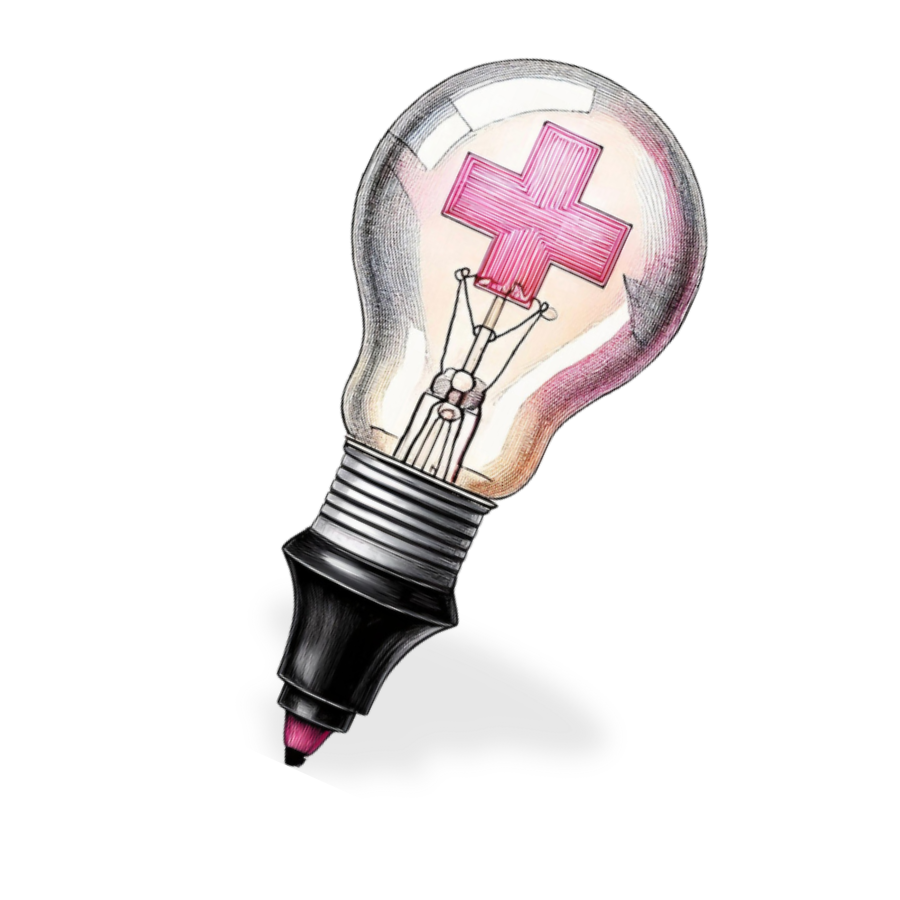The most common misconception I encounter when working with health professionals is that instructional design is simply about organizing information logically and presenting it clearly.
In reality, effective health education must address multiple dimensions:
Identity transformation: Lasting health behavior change often requires people to see themselves differently ("I am someone who prioritizes movement" versus "I should exercise more").
Emotional barriers: Fear, shame, past trauma, and other emotional factors frequently prevent knowledge implementation, yet these are rarely addressed in instructional design.
Context integration: Information that doesn't fit into someone's daily life context remains theoretical, regardless of how well it's presented.
Belief systems: Health information interacts with existing beliefs and values in complex ways that pure information cannot overcome.
When designing my lifestyle medicine programs, I discovered that providing less information but creating more transformation experiences often led to significantly better outcomes. This counterintuitive approach challenges the standard "more content equals more value" assumption.
Despite the health field's commitment to evidence-based practice, few health educators apply evidence-based learning principles to their teaching.
Consider these research-backed approaches that dramatically improve learning outcomes:
Spaced repetition: Reviewing key concepts at scientifically determined intervals increases retention by up to 200%, yet most health courses present information once and move on.
Retrieval practice: Active recall through quizzes and application exercises builds stronger neural pathways than passive review, but most health education emphasizes content consumption over practice.
Emotional anchoring: Information connected to emotional experiences is remembered and implemented at significantly higher rates, yet many health courses maintain a purely clinical tone.
Microlearning: Breaking content into 5-10 minute segments aligns with attention spans and cognitive load limitations, allowing for better processing and integration.
In my engineering career, I was trained to optimize systems for desired outcomes. When I apply this same rigor to health education design, the transformation in engagement and implementation is remarkable.
"I need to create a course" is often where health professionals begin, without considering whether a course is actually the most effective medium for their specific learning objectives.
Different health topics require different approaches:
-
Procedural knowledge (how to perform specific health techniques) is best learned through video demonstration followed by guided practice.
-
Conceptual understanding (grasping complex health relationships) benefits from visual mapping, analogies, and interactive exploration.
-
Habit formation requires spaced microinterventions, accountability systems, and environmental design—not just instructional content.
-
Emotional resilience development needs embodied experiences, reflection prompts, and guided application—elements often missing from traditional courses.
When I worked with a functional medicine practice to transform their patient education, we replaced their 90-minute comprehensive video with a series of 3-minute actionable modules, a physical toolkit, and a structured practice guide. Patient implementation rates increased by 340%.
"Do they understand it?" is a fundamentally different question from "Can they apply it?" or "Will they implement it?"—yet most health education assessment focuses exclusively on comprehension.
Consider these alternative assessment approaches:
Implementation metrics: Tracking actual behavior change (even self-reported) provides more meaningful feedback than knowledge tests.
Confidence assessment: Measuring someone's confidence in applying knowledge often predicts implementation better than measuring the knowledge itself.
Obstacle identification: Having learners identify their specific barriers to implementation creates personalized insight and increases success rates.
Real-world application: Assignments that require applying knowledge in everyday contexts build both capability and confidence.
In my own health journey, I've completed courses where I scored 100% on every quiz yet implemented virtually nothing—a stark reminder that traditional assessment can create an illusion of effectiveness.
No health information exists in a vacuum. Effective instructional design must consider:
Cultural context: Health beliefs, practices, and priorities vary significantly across cultural backgrounds.
Health literacy spectrum: Materials must be accessible without being condescending, a delicate balance that requires thoughtful design.
Resource realities: Implementation often depends on access to time, space, tools, and support systems that vary widely among learners.
Prior experience: Previous healthcare experiences shape how new information is received and interpreted.
As an immigrant myself, I've experienced firsthand how health education that ignores cultural context can create disconnection rather than engagement, regardless of the information's accuracy.
Whether you're creating patient education materials, professional training, or online courses, these principles can immediately improve your instructional design:
-
Begin with behavior, not information: Start by clearly defining what people should be able to DO after learning, not just what they should KNOW.
-
Create implementation bridges: Include specific guidance on how to move from learning to action, with particular attention to common obstacles.
-
Incorporate identity language: Frame materials to connect with who people want to become, not just what they should do.
-
Design for emotional engagement: Include stories, examples, and reflective prompts that connect information to meaningful emotional contexts.
-
Build in application moments: Never present more than 5-10 minutes of information without an opportunity to apply, reflect, or otherwise engage with the content.
As health professionals, we have vital knowledge to share. But our effectiveness isn't measured by what we teach—it's measured by what people learn, implement, and integrate into their lives.
I invite you to examine one piece of health education you've created or use with this question: "If implementation is the true measure of success, how would I design this differently?"
The gap between health knowledge and health transformation isn't about more information—it's about better instructional design. And closing that gap can dramatically amplify your impact as a health professional.
Dr. Elaine Barretto combines expertise in biomedical engineering, psychology, and health communication to help health professionals create more effective educational experiences. Through the Health Design & Innovation Studio, she partners with practitioners, researchers, and organizations to transform complex health expertise into meaningful learning that creates real-world impact.


